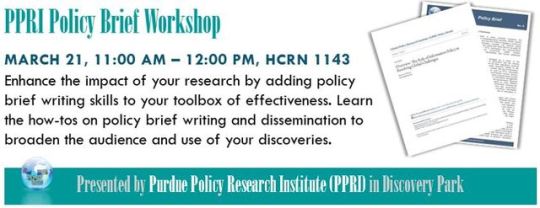#highimpacttips
Explore tagged Tumblr posts
Photo

Up-to-date scientific research findings are not just found in journals. For a variety of reasons, more and more academic researchers are finding time during their busy days to read and even write science blogs. This trend is on the rise and creates new opportunities for scientists to share their research and engage with the public.
In a 2015 survey of scientists who use social media, 92 percent indicated that they read science blogs. And according to a 2014 survey of more than 600 science bloggers, 47 percent identified themselves as working in academic research, indicating that blogging has become more of an accepted practice at universities.
The number of science blogs seems to also grow daily. The site ScienceSeeker.org has links to more than 2,300 blogs and other science news sources. The diversity of science blogs includes the more commonly covered biology and climate science and also topics such as paleontology, political science and astronomy.
Reasons for blogging vary, but include the ability to explain science; draw attention to science that is not normally covered in mainstream media, and the opportunity to share one’s work with colleagues. While research in this area is limited, there is some indication that scientists who do promote their work through social media do receive more citations based on a study of nanotechnology researchers.
For those who wish to join the “blogosphere” there are some points for how to make the most of that effort. First, identify the role of your blog. Do you want to promote scientific information in general; share insights with colleagues; highlight research from your lab; or try to explain current scientific discoveries covered in the news. The best blogs do have a “voice” or specific role for which those who read it come to expect. Also make sure to identify who you are and your scientific expertise.
How content is provided in the blog is also important. Photos and videos are easily shared by others through social media and help provide interest. People always like to hear stories, so sharing the story behind a discovery or anecdote about personal experience can make it more interesting. Practical information or “how to” advice is also popular.
There are numerous resources on the web to also help you determine what platform to use (WordPress, Blogger or Tumblir for example) and how to promote your blog.
As most people now get their science information from the web, blogging is a great addition to traditional science news coverage. It can add interest, clarify, highlight and reach new audiences with science information.
– Beth Forbes, director of science communication, College of Agriculture ([email protected])
(via BLOGGING: IT’S ACADEMIC – Dimensions of Discovery)
0 notes
Photo

PPRI Policy Brief Workshop
Join us TOMORROW (March 21, 11am-noon in HCRN 1143)!
See more information HERE.
0 notes
Photo


Why abbreviations can be bad for science
(via Why abbreviations can be bad for science - Futurity)
“Abbreviations are meant to be shortcuts, but they end up alienating people,” says Kipling Williams, a professor of social psychology at Purdue University who has studied ostracism for more than 20 years.
In a recent article, Williams and colleagues offer fellow scientists some advice: stop using abbreviations when communicating about science. They say acronyms and other abbreviations can alienate people who aren’t experts.
“By not using abbreviations and adding just a few extra syllables we can bring everyone in the loop.”
“It’s not that people are trying to be exclusive. They just mistakenly assume other people know. We suggest it’s better to err on the side that they don’t know and avoid using abbreviations, especially when writing and promoting research.
“This attempt to be efficient is more likely to make people feel excluded and ignored, much like we see in ostracism research, and this could hinder efforts in sharing scientific findings across disciplines and with the general public.”
Williams, along with graduate student Andrew H. Hales and alumnus Joel Rector, offer the advice in an article for the Association for Psychological Science’s APS Observer. Abbreviations can include acronyms or initialisms, such as DARPA, ANOVA and MPA, which are Defense Advanced Research Projects Agency, analysis of variance and Midwestern Psychological Association, respectively.
Scientific papers have more impact if they’re ‘stories’
Another reason scientists use abbreviations is because they give insiders a cohesiveness, but at the expense of others. The Purdue researchers say there is an easy solution; don’t use abbreviations.
“We know from ostracism research that seemingly trivial items can make people feel ignored and excluded,” says Hales, a doctoral student in psychological sciences. “For example, previous research has found that while Christmas displays may seem innocuous, to those who don’t celebrate Christmas it is a reminder of outsider status. Or, when women were asked to read job descriptions for engineering positions, the ideal candidate was described using the male pronoun. By not using abbreviations and adding just a few extra syllables we can bring everyone in the loop.”
Source: Purdue University
Original Study
0 notes
Photo


Does College Size and Rank Matter for New Faculty Competing for Shrinking Federal Research Dollars?
Arden Bement shares here what he presented at the University of Illinois at Chicago in October 2016.
I am delighted to address this topic, and want to thank Professor Vahid Motevalli, Associate Dean for Research and Innovation at Tennessee Tech University, for proposing it. I could save you thirty minutes by answering this question “yes” and sit down. However, the real answers lie with the companion questions: “Why does it matter?” and “What can you do about it?” Most of my talk will be focused on addressing these two questions.
Even though academic leaders criticize ranking methodologies and metrics, they depend upon them to guard against complacency, track their aspirational peers, and differentiate their programs to better compete for research funding and graduate talent. However, most would agree that it’s the substance behind the rank that matters not the metric alone.
Why does it Matter?
A start on answering the question “Why does it matter” is to consider the following global challenges that our new Administration must address:
· Threats against our homeland by adversaries,
· Pandemics and chronic diseases that threaten life,
· Food and water security,
· International terrorism,
· Cyber threats, such as loss of identity, denial of service, compromise of classified information, and disruption of critical infrastructures,
· Natural disasters,
· Degradation of environment,
· Species extinction and loss of biodiversity, and
· Economic growth and sustainability, among others.
Addressing these grand challenges will require continuing attention at the highest government levels to the science and technology policy issues involved. In doing so policy makers must face four interlocking realities:
· The fraction of our society with the technical skills required to address these grand challenges must expand,
· In particular, the technical skills needed for economic growth and sustainability must keep pace with global technological change,
· To address these needs the nation’s education sector must draw more students into STEM education and training, especially the Underrepresented, and
· The discretionary part of the U.S. federal budget, which supports STEM research and education, has been shrinking rapidly but must be expanded to meet these goals.
Given these compounded pressures one might anticipate that federally funded research and education will either stagnate or contract in the near future pending renewed economic expansion. If so, competition among all engineering programs regardless of size will intensify.
Fortunately most federal research grant agencies do pay attention to academic diversity, especially in tight budget years, and recognize that top talent is not only found in large, highly-ranked universities.
What Can Be Done About it?
Small and medium-size engineering schools either have or can develop differentiating competitive advantages within the following categories:
· Proposal support
· Risk assessment
· Contextual factors
· Convergence, and
· Impact and Integration
Proposal Support
Top research universities today provide research support services and retain consultants to improve the quality and success rate of their research proposals. Even with these resources the number of proposal resubmissions and elapsed time to grant award can be substantial. While smaller universities lack resources for providing such services on their own, statewide or regional resource sharing agreements among universities are worth considering.
Seasoned researchers have learned the importance of using merit review feedback and constant communications with their program officers to reduce “proposal churn”. During my tenure at NSF one university with a medium-size engineering program sent a delegation of newly recruited faculty each year to meet program officers and “learn the ropes”. I found from feedback that these visits resulted in more successful grant awards.
A faculty member’s rotation as a program officer at NSF is another effective way to “learn the ropes”. This experience can both enhance future grant success for the rotator but can also prepare him or her for coaching new faculty members on how to write a winning proposal.
Risk Assessment
Risk assessment in research goes beyond the fundamental challenges of the problem to be solved. It also requires addressing such questions as:
· Can the research be accomplished in the time and funding proposed?
· Can the faculty advisor attract the graduate talent necessary to do the research?
· Is instrumentation available and maintained to enable the necessary observations and measurements?
· Does the institution have effective policies and provide the necessary oversight to both assure the health and safety of the researchers and comply with federal regulations?
Addressing these risk factors in the initial proposal can avoid grant award delays or rejection.
Context
In addressing complex engineered systems or “systems of systems” one must consider all factors involved, including scientific, technical, economic and human factors. Human factors can be the most complex because of the interrelationship among social, behavioral, cultural, belief, and political factors in all combinations. Solutions on a national scale involving such a broad array of contextual factors are not likely to be found inside of the Washington Beltway.
Furthermore, context also has temporal and spatial dimensions. What may have succeeded yesterday may not succeed either today or tomorrow because of changes in context over time. Likewise, what succeeds at the local or regional scale may not be adequate at national or global scales because of a wider diversity of needs and preferences.
Technological advances offer new flexibilities for addressing human needs or wants in a more distributed way. These run the gamut of flexible additive manufacturing; new transportation modalities; distributed energy supply; smart, adaptable, and anticipatory control systems; internet commerce, and paperless digital transaction management; among others. Through these developments industries and markets can become more readily regionalized, localized, and individualized. They also provide new opportunities for small and medium-size engineering programs to focus on problems tailored to their constituent base and engineer best practices tailored to sub-national scales.
Convergence
While universities have built multidisciplinary centers and institutes over the past fifty years, few have been truly interdisciplinary. Interdisciplinary research requires that a significant number of faculty members, post docs, and graduate students develop interests in exploring the nebular space among disciplines. This includes not only the physical sciences but also the social and behavioral sciences and humanities. This form of convergent research has been nurtured by NSF’s IGERT program and is still emerging. To be convergent, however, requires that each member of the interdisciplinary team contribute their insights in defining the problem to be solved and the solution strategies to be employed.
Small and medium sized engineering programs have long exploited opportunities to expand the scope of their research through collaborations with other collages and professional schools within their universities. I can imagine that some of your newer faculty members could be important participants in addressing complex problems through convergent research.
Impact and Integration
An important competitive strategy for small and medium engineering research programs is to build impact. Becoming more outcome-oriented can do this. However, most academics live in a world of outputs, such as publications, courses developed, and graduate students supervised. Some academics would like to think of these as outcomes. However, to translate an output to an outcome one must first answer the question “If I succeed beyond my wildest dreams, what difference will it make?” Once you answer this question you will need to answer two more questions: “How long will it take?” and “How much will it cost?”
An important strategy for achieving impact is to seek synergies and leverages for reducing research time to practice. This search should seek “sweet spots” among combinations of technical, economic, and geographic leveraging.
Most engineering programs today engage in both “opportunity-driven” research, and “need-driven” innovation and entrepreneurship. The first modality generates publications, only a few of which will have impact in the short term. The second develops patent disclosures, only a few of which will lead to successful licenses or startups in the short term. One should explore how best to integrate and leverage both of these modalities to reduce time and cost to a measurable impact.
One approach for reducing time to market, is to modify the linear model of sequential technology readiness stages from fundamental concept to industrial production. In today’s world the linear approach takes too long and costs too much. Where advantageous, product design and development in industry should be time-coupled with system-level proof-of-concept modeling at the university. This approach employing all critical requirements for proof of concept verification and validation could reduce costly and time-consuming empirical product testing and evaluation in industry.
This feedback loop should in turn loop back to the initial concept. This reassessment might point to additional research needed to meet design requirements. It might also suggest design strategies for skipping product cycles to achieve faster competitive impact.
Speed and agility for transferring technology from the university to industry by further integrating education, research, innovation and entrepreneurship is another important strategy. It could lead to additional funding resources to offset a potential tightening of early-stage research funding. Such resources would include federal SBIR and economic development grants; federal laboratory collaborations; state economic development, technology transfer, and startup grants; and various forms of direct industry support for education, R&D, technology licensing, and student internships.
Industry benefits from the expanded offerings in activity-based education and innovation in engineering schools today. Engineering students who intern with industry concurrently with their activity-based learning on campus are generally better acculturated with industry’s design and production practices upon graduation. Some companies are now expressing interest in extending industry-sponsored student internships throughout the academic year.
Concluding Remarks
I hope I have been able to assure you in these brief remarks that small and medium-size engineering programs are essential to the nation not only for educating an engineering work force for the future but also for preparing the public for technological changes that may impact their lives faster than they suspect.
These changes can be both wonderful and threatening; the two sides of a “Devil’s conundrum”. New knowledge nourished by research and digested by education and experience is our principal pathway into the future. Therefore, it is imperative that all STEM academics make technical knowledge more digestible to the general public by filtering out jargon, acronyms, mathematics, and rubrics that are the “lingua franca” of educated scientists and engineers.
This is a worthy objective for science and engineering schools of all sizes and ranks. It will require engaging the public through all modes of communication. The arts and humanities, have long communicated technology with the public in many formats. Unfortunately, responsible technology journalism is declining while sensationalizing the threating side of the “Devil’s conundrum” is increasing. Convergent engagement of the arts and humanities with science and engineering at universities, especially where public interests are involved, is an urgent need. Sustained public support for federally funded basic research could depend on it.
Thank you
0 notes